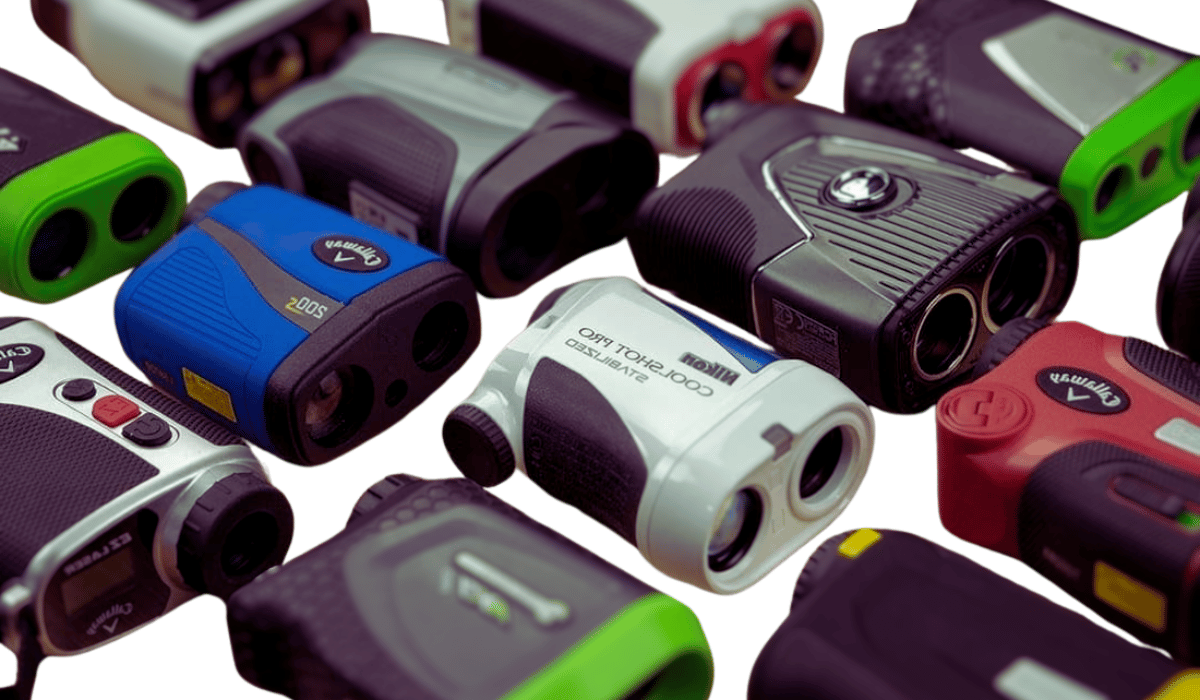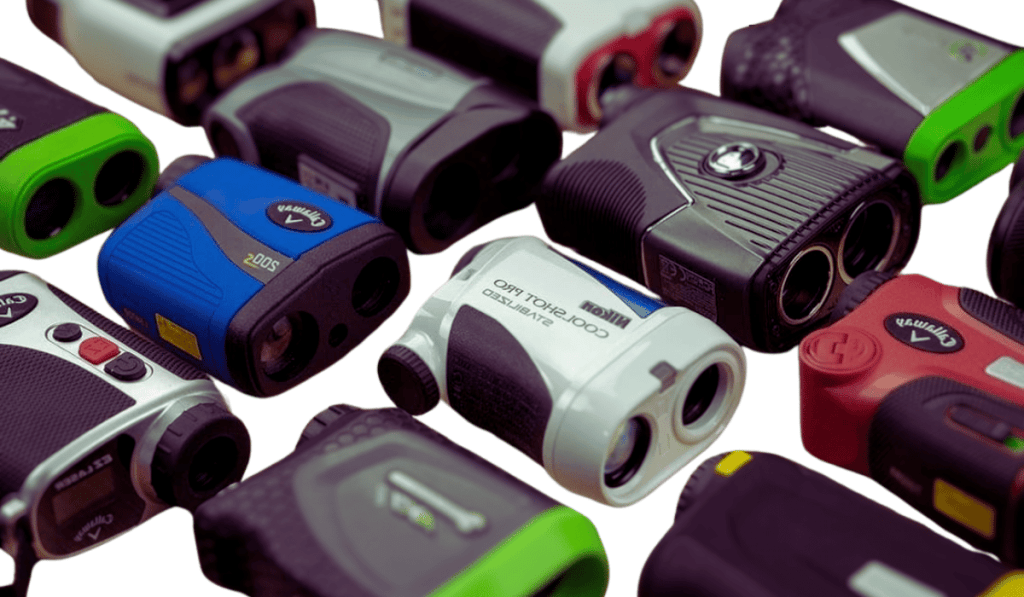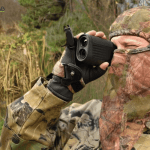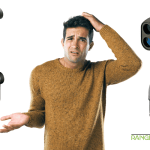

In a world where precision and accuracy are paramount, rangefinder technology has emerged as a crucial tool across various fields. Rangefinders, devices that measure the distance from the observer to a target, are essential for activities ranging from sports like golf and archery to professional applications in surveying, construction, and military operations. Their significance lies in their ability to provide quick, accurate measurements, which are fundamental in making informed decisions, whether about taking a shot in hunting, choosing the right club in golf, or accurately surveying a piece of land.
The evolution of rangefinder technology has been a journey of innovation, from rudimentary optical devices to today’s highly sophisticated laser and ultrasonic rangefinders. These devices not only measure distances but also offer a plethora of additional functionalities like angle compensation, ballistic data calculation, and even GPS integration. Their versatility and ease of use have made rangefinders indispensable in many hobbies and professions.
As we delve deeper into understanding rangefinder technology, we will explore how these devices work, the types available, and their varied applications. We will also provide guidance on choosing the right rangefinder for your needs and tips for effectively using and maintaining these devices. Whether you are a seasoned professional or a curious newbie, this guide aims to equip you with a comprehensive understanding of rangefinder technology, enhancing your activities that rely on distance measurement.
Table of contents
The Basics of Rangefinder Technology
Rangefinder technology is an intriguing blend of physics and optics designed to calculate distances quickly and accurately. Understanding how rangefinders work, the types available, and their key components is essential for anyone looking to utilize this technology effectively.
How Rangefinders Work
Rangefinders function is based on measuring the time it takes for a signal to travel from the device to the target and back. This signal can be light, sound, or other forms. The device then uses this time to calculate the distance based on the speed at which the signal travels.
- Laser Rangefinders: These are the most common type used in sports and outdoor activities. They emit a laser beam towards the target. When the beam hits the target, it reflects to the device. The rangefinder calculates the distance by measuring the time the laser returns. Due to the high speed of light, this calculation is swift and accurate.
- Optical Rangefinders: Often found in traditional surveying equipment and some cameras, these devices use visual methods to estimate distance. They typically involve aligning two images and using triangulation based on known angles and the apparent size of the target to determine distance.
- Ultrasonic Rangefinders: Common in industrial and robotic applications, these rangefinders emit ultrasonic waves. The distance is calculated based on the time it takes for the sound waves to bounce back from the target. While not as precise as laser rangefinders, they are helpful in specific contexts where laser or optical methods are not feasible.
Critical Components of a Rangefinder
A rangefinder is composed of several essential components, each playing a critical role in its operation:
- Emitter: In laser rangefinders, the laser diode emits the laser beam. For ultrasonic rangefinders, it’s the device that produces the ultrasonic sound waves.
- Receiver: This component detects the signal (light or sound) that returns from the target. In laser rangefinders, it’s typically a sensor sensitive to the specific wavelength of the laser.
- Processor: The heart of the rangefinder, the processor, calculates the distance based on the time taken for the signal to return. It often incorporates algorithms to account for various environmental factors, like atmospheric conditions, that might affect the accuracy.
- Display: This is where the measured distance is shown, usually in yards or meters. Modern rangefinders often feature digital displays that offer additional information, such as angle of elevation/depression, temperature, and ballistic data for shooting.
- Optics: For optical and laser rangefinders, the lens and optics’ quality is crucial. They determine the target image’s clarity and the distance measurement’s precision.
By understanding these basics, users can appreciate the sophistication behind rangefinder technology and make more informed decisions when choosing and using these devices.
Applications of Rangefinders
With their ability to measure distances accurately and swiftly, rangefinders have found applications in various fields. From hunting to golf, photography to construction, their utility is widespread, making them indispensable tools in several industries.
In Hunting and Wildlife Observation
- Precision in Targeting: For hunters, rangefinders are crucial for determining the exact distance to their target, ensuring a more ethical and successful hunt. Accurate distance measurement is vital for correct shot placement, especially in bow hunting, where distance significantly affects arrow trajectory.
- Wildlife Observation: Wildlife enthusiasts and researchers use rangefinders to maintain a safe and respectful distance while observing animals. This tool helps estimate the distance to wildlife without disturbing their natural habitat.
In Golf and Other Sports
- Golfing Accuracy: In golf, rangefinders assist players in gauging the distance to the hole or other points on the course, such as hazards or the green’s edge. This information is crucial for club selection and strategizing shots.
- Other Sporting Applications: In archery and shooting, rangefinders help athletes practice and compete by providing precise distance measurements to targets, which is essential for accuracy.
Photography and Filmmaking
- Focusing and Composition: Photographers and filmmakers use rangefinders to measure the distance to their subject, achieving the correct focus and depth of field. This is particularly important in cinematic productions where precise distance measurements are needed for camera focus.
- Scouting Locations: When scouting locations for shoots, rangefinders help understand a site’s spatial dimensions, allowing for better planning and set-up of equipment.
Construction and Surveying
- Measuring and Mapping: Rangefinders are used for quick and accurate distance measurements in construction and surveying. This is crucial for creating maps, planning construction projects, and ensuring buildings are constructed correctly.
- Safety and Efficiency: They provide a safe way to measure distances, especially in hazardous or inaccessible areas, improving safety and efficiency on construction sites.
Rangefinders are versatile tools that enhance precision and efficiency in various professional and recreational activities. Their widespread applications underscore their importance in modern technology and practices.
Choosing the Right Rangefinder
Selecting the ideal rangefinder is not just about picking a high-quality product; it’s about finding the one that best suits your needs and activities. Here are vital factors and tips for first-time buyers to make an informed decision.
Factors to Consider
- Range Capability: The primary function of a rangefinder is to measure distance. Assess the maximum and minimum range capabilities and ensure they align with your intended use. For instance, hunters might need longer ranges than golfers.
- Accuracy: This is critical. A rangefinder’s accuracy determines how close the measured distance is to the actual distance. Look for rangefinders with high precision, especially for activities like hunting or surveying, where accuracy is paramount.
- Size and Portability: The size and weight of the rangefinder matter, especially for activities that involve a lot of movement, like hunting or hiking. A compact, lightweight rangefinder is ideal for ease of transport and use.
- Features: Consider additional features like angle compensation (crucial for hunting in hilly terrain), waterproofing (for outdoor use), image stabilization, and built-in ballistic calculators (for shooting sports).
Tips for First-Time Buyers
- Research and Reviews: Before purchasing, conduct thorough research. Read reviews, compare models, and seek recommendations from experienced users in your field of interest.
- Understand Your Needs: Be clear about what you intend to use the rangefinder. This understanding will guide your decision regarding range, accuracy, and additional features.
- Budget Consideration: Rangefinders come in a wide range of prices. Determine your budget and find the best option within it. Remember, the most expensive option is not always the best for your needs.
- Try Before You Buy: If possible, test different rangefinders. Handling a rangefinder can give you a better feel for its usability and functionality.
- Warranty and Support: Look for products with good warranties and customer support. This can be invaluable if you encounter issues or have questions about your rangefinder.
Choosing the right rangefinder is a balance of understanding your specific needs, considering the key factors, and being aware of the options available within your budget. By doing so, you can select a rangefinder that will serve you well in your endeavors.
Using a Rangefinder Effectively
Mastering a rangefinder can significantly enhance your accuracy in various activities. Whether you’re a hunter, golfer, or surveyor, understanding the essential operation, tips for accurate measurements and common pitfalls can make a substantial difference.
Basic Operation and Handling
- Powering Up: Begin by turning on the rangefinder. Most models have a simple power button.
- Targeting: Look through the viewfinder and aim at your target. Make sure the target is within the effective range of your device.
- Focusing: Adjust the focus to see your target. This is usually done with a dial or a button.
- Measuring Distance: Press the designated button to measure the distance. The rangefinder will emit a laser or other signal and calculate the distance based on the time it takes for the signal to return.
Tips for Accurate Measurements
- Steady Hands: Keep your hands as steady as possible when targeting and measuring. Shaky hands can lead to inaccurate readings.
- Clear Line of Sight: Ensure no obstructions between the rangefinder and the target. Obstacles can interfere with the accuracy of the measurement.
- Regular Calibration: Some rangefinders may require calibration for optimal performance. Refer to the manufacturer’s instructions for guidance.
- Understanding Conditions: Be aware of environmental factors, such as light, rain, or fog, affecting the rangefinder’s performance. Some models are better suited for certain conditions than others.
Common Mistakes to Avoid
- Ignoring Angle Compensation: For activities like hunting or golfing in hilly terrains, not using angle compensation can lead to significant errors in measurement.
- Incorrect Range Use: A rangefinder beyond its effective range can result in inaccurate readings. Always be aware of your device’s limitations.
- Neglecting Maintenance: Rangefinders need regular cleaning and care like any optical device. Neglecting maintenance can degrade the device’s performance over time.
- Overdependence: While rangefinders are incredibly useful, relying solely on them without developing your judgment can be a mistake, especially in activities like hunting or golf, where environmental intuition is critical.
Understanding how to use your rangefinder effectively is crucial for getting the most out of this technology. Practice these techniques and avoid common errors to enhance your proficiency and accuracy in any distance measurement activity.
Maintenance and Care of Rangefinders
Proper maintenance and care are crucial for ensuring your rangefinder’s longevity and optimal performance. From cleaning to battery management, here are essential tips to keep your device in top condition.
Cleaning and Storage
- Cleaning the Lens: Use a soft, lint-free cloth to clean the lens. Avoid harsh chemicals; opt for a specialized lens cleaning solution if necessary.
- Protecting the Body: Wipe the body of the rangefinder with a dry cloth to remove dust and dirt. Avoid exposing it to extreme temperatures and moisture.
- Proper Storage: Store your rangefinder in a dry, cool place when not in use. Using a protective case is advisable to prevent scratches and damage.
Battery Care and Replacement
- Battery Type: Know the type of battery your rangefinder uses (rechargeable or disposable) and have spares on hand if needed.
- Battery Life: Regularly check the battery level and replace or recharge as necessary to avoid running out of power at critical moments.
- Safe Removal: When replacing batteries, ensure the device is off and handle batteries carefully, avoiding any contact with moisture.
Calibration and Troubleshooting
- Regular Calibration: Some rangefinders may require periodic calibration for accuracy. Refer to the manufacturer’s guide for instructions.
- Troubleshooting Common Issues: Familiarize yourself with basic troubleshooting steps for common issues like inaccurate readings or display problems.
- Professional Assistance: Consult with a professional or contact the manufacturer’s customer support for complex issues.
Maintaining your rangefinder is not just about keeping it clean; it’s about ensuring it functions accurately and reliably over time. Regular maintenance, careful handling, and proper storage will significantly extend the life and performance of your rangefinder.
Future Trends in Rangefinder Technology
The realm of rangefinder technology is constantly evolving, with emerging technologies paving the way for new applications and enhancements. Let’s explore some of the exciting future trends in this field.
Emerging Technologies
- Integration with Artificial Intelligence (AI): AI can significantly enhance rangefinder functionalities, such as automated targeting, environmental analysis, and predictive analytics for better accuracy.
- Advanced Laser Technology: Developments in laser technology may lead to increased range and precision, even in challenging weather conditions.
- Augmented Reality (AR) Integration: AR can overlay digital information in the real world, providing users with enriched data and an immersive experience.
Potential Future Applications
- Environmental and Wildlife Conservation: Advanced rangefinders can aid in mapping habitats, tracking wildlife, and conducting ecological research with greater precision.
- Autonomous Vehicles: Rangefinders, particularly those integrated with AI, could be crucial in developing self-driving cars by enhancing obstacle detection and navigation.
- Smartphone Integration: As smartphones become more powerful, we can see rangefinders being integrated into mobile devices, making this technology more accessible to the general public.
- Virtual Reality (VR) and Gaming: Incorporating rangefinders into VR and gaming could lead to more realistic and interactive experiences.
The future of rangefinder technology is not just about measuring distances; it’s about integrating with other technologies to create more comprehensive, intelligent, and user-friendly systems. As we continue to innovate, the potential applications of rangefinders are only limited by our imagination.
Expert Insight: Personal Opinion and Feedback
As an expert in rangefinder technology, I have witnessed its remarkable evolution and how it can significantly impact various activities. Here’s my perspective on this innovative technology and its importance in choosing the right tool for specific needs.
The Writer’s Unique Perspective on Rangefinder Technology
Rangefinder technology, to me, represents a perfect amalgamation of scientific innovation and practical utility. Over the years, I’ve observed its transition from a specialized tool used primarily in military and surveying contexts to a more widespread and diverse application, encompassing activities from golf to wildlife photography. This transition is not just about technological advancement; it’s about making precision and efficiency more accessible to a broader audience.
One of the most exciting developments I’ve seen is the integration of rangefinders with digital technology. For example, smartphone apps and Bluetooth connectivity have transformed rangefinders from mere distance-measuring devices into multifunctional tools that can offer real-time data, weather conditions, and even ballistic information for hunters and shooters. This evolution is a testament to how technology can adapt and integrate into our daily lives, unimaginably enhancing our experiences and skills.
The Importance of Choosing the Right Tool for Specific Needs
From my experience, the key to harnessing the full potential of a rangefinder lies in selecting the suitable model for your specific needs. For instance, a rangefinder for a golfer doesn’t need the same range as one used for long-range shooting or wildlife observation. Likewise, a construction professional might prioritize durability and extended range, while a hiker might value compactness and battery life more.
It’s not just about the highest range or the most features; it’s about what aligns best with your activity. The right rangefinder can elevate your experience, whether it’s by improving your game, enhancing your outdoor adventure, or aiding in professional accuracy. On the other hand, an ill-suited rangefinder can become more of a hindrance than a help.
In conclusion, as rangefinder technology evolves, I am excited to see how it will further integrate into different fields. My advice to potential users is to stay informed, understand your requirements, and choose a rangefinder that meets your current needs and opens up new possibilities for your activities.
Frequently Asked Questions (FAQs)
How do you use a basic rangefinder?
To use a basic rangefinder, start by turning it on and looking through the viewfinder. Aim it at the target object and press the measurement button. The rangefinder will emit a laser beam (in the case of a laser rangefinder) to the target and calculate the distance based on the time it takes to reflect. The distance will then be displayed on the screen. It’s essential to keep your hand steady for accurate results.
Do you aim a rangefinder at the flag or the golf hole?
You aim the rangefinder in golf at the flag, not the hole. The flag provides a clear, vertical target for the laser to hit and reflect back, precisely measuring the distance. Aiming at the hole, which is less visible and not elevated, can result in less accurate measurements.
How do you read a rangefinder?
Reading a rangefinder involves looking through the viewfinder to target an object and pressing a button to calculate the distance. The display inside the viewfinder will show the distance, usually in yards or meters. Some models might also display additional information like elevation angle or environmental conditions.
What is the easiest rangefinder to use?
The easiest rangefinders typically have a simple interface, quick target acquisition, and clear display. Models with features like image stabilization, automatic brightness adjustment, and a minimal number of buttons are often preferred for ease of use. Brands like Nikon and Bushnell offer user-friendly models that are ideal for beginners.
Additional Relevant Questions
Can rangefinders be used in all weather conditions? Most modern rangefinders are built to withstand various weather conditions. However, heavy rain or fog can affect the accuracy of laser rangefinders. It’s essential to check the weather resistance of a rangefinder before purchasing.
Are rangefinders legal in golf tournaments? Rangefinders are legal in many golf tournaments, but it’s essential to check the specific rules of each event. Devices that only measure distance are usually allowed, but those with additional features like slope calculation may not be permitted.
How accurate are rangefinders? The accuracy of rangefinders varies depending on the model and conditions. Generally, laser rangefinders are highly accurate, often within ±1 yard.
Can rangefinders measure angle and elevation? Yes, many advanced rangefinders can measure angles and elevation changes. This feature is handy in hunting, golf, and mountain hiking activities.
How do you calibrate a rangefinder? Calibration processes vary by model. Generally, it involves aiming at a known distance and adjusting the settings until the rangefinder’s reading matches the distance. Refer to the user manual for specific calibration instructions for your model.
Conclusion
With its diverse applications and evolving features, rangefinder technology is a remarkable testament to human ingenuity and technological advancement. From the basic principles of how rangefinders work to the intricate details of their maintenance and future trends, this guide has traversed the multifaceted world of rangefinders.
Key Takeaways:
- Understanding the Basics: Rangefinders, whether laser, optical, or ultrasonic, operate on fundamental principles of distance measurement, offering precision and ease in various fields.
- Diverse Applications: The utility of rangefinders extends beyond hunting or golf; it’s a vital tool in photography, construction, and many other areas where accurate distance measurements are crucial.
- Informed Selection: Choosing the right rangefinder involves considering factors like range, accuracy, size, and additional features, aligning with your needs.
- Effective Usage: Proper handling, understanding the basic operation, and avoiding common mistakes are essential for accurate measurements.
- Maintenance Matters: Regular cleaning, careful storage, and timely calibration ensure the longevity and reliability of your rangefinder.
- Looking Ahead: The future of rangefinder technology is ripe with potential, promising even more sophisticated and varied applications.
As we’ve seen, rangefinders are more than just tools; they are gateways to precision, efficiency, and success in various endeavors. Whether you’re a seasoned professional or a curious beginner, the world of rangefinders offers many opportunities to enhance your skills and knowledge.
Encouragement for Exploration:
I encourage you, the reader, to delve deeper into the fascinating world of rangefinder technology. Embrace the precision and convenience these devices offer. Whether for sport, work, or leisure, a rangefinder can be an invaluable companion, transforming the way you interact with the world around you.
Remember, the right rangefinder can be a game-changer in your pursuits. So, equip yourself with knowledge, choose wisely, and step into a more precise world!








